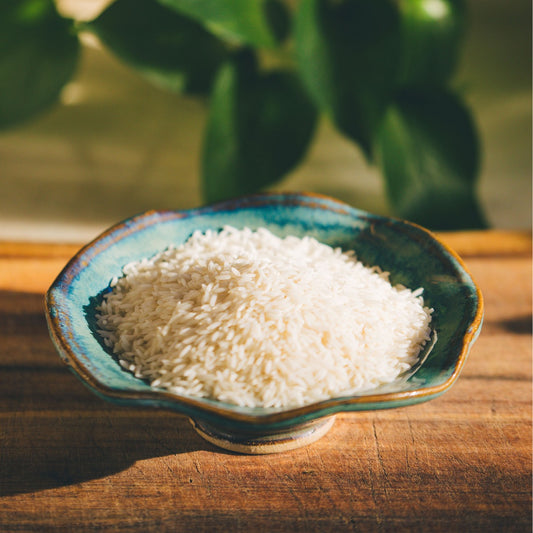
The sweet taste, as a naturally appealing element of our diets, requires little explanation. It is the flavor of sugars such as glucose, sucrose, fructose, maltose, and lactose. It can be found in many carbohydrates, fats, and proteins.1
But the sweet taste is often more subtle than we might initially imagine. For instance, rice and milk are predominantly sweet.
The Sweet Taste—at a Glance
| Balances: |
Vata and Pitta |
| Aggravates: |
Kapha |
| Primary Elements: |
Earth and water |
| Virya (temperature): |
Cooling |
| Vipaka (post-digestive effect): |
Sweet |
| Gunas (associated qualities): |
Heavy, cold, oily, soft, relatively difficult to digest, grounding, building, nourishing |
| Associated Positive Emotions: |
Love, sharing, compassion, joy, happiness, bliss—the most sattvic of flavors |
| Emotions of Excess: |
Attachment, greed, possessiveness |
| Location on the Tongue: |
Front tip |
| Affinity for Organs: |
Thyroid, upper lungs |
| Most Affected Tissues: |
All seven tissues (dhatus) |
| Direction of Movement: |
Descending, stabilizing (activates apana vayu) |
| Additional Actions: |
Moistening, demulcent, emollient, expectorant |

Examples—Substances that Illustrate the Sweet Taste
| Fruits |
Bananas, cantaloupe, dates, figs, mangos, melons, prunes |
| Vegetables |
Beets, carrots (cooked), cucumber, olives, sweet potatoes |
| Grains |
Corn, rice, wheat |
| Legumes |
Garbanzo beans, lentils (red), mung beans, navy beans, tofu, urad dal |
| Nuts & Seeds |
Almonds, cashews, coconut, pumpkin seeds |
| Dairy & Eggs |
Ghee, milk, eggs |
| Meat |
Beef, buffalo, pork, salmon |
| Sweeteners |
All |
| Spices & Flavorings |
Basil, bay leaf, caraway, cardamom, cinnamon, coriander, fennel, mint, nutmeg, saffron, tarragon, vanilla |
Benefits
The sweet taste benefits the mucus membranes throughout the body, including those lining the mouth, the lungs, the GI tract, the urinary tract, and the reproductive system.
This taste is strengthening, nutritive, energizing, tonic, and soothing to the mind. In fact, the sweet taste is often used to enhance clarity and awareness in spiritual realms. It also has a sustained cooling effect on the body.
The sweet taste benefits the skin, hair, and complexion, hastens the repair of wounds, is pleasing to the senses, and lends melodious qualities to the voice. It also enhances the integrity of the immune system, improves longevity, and ultimately, increases
.3 4
In Excess
It is tempting to overindulge in the sweet taste because it is so addictively pleasant. However, when overused, the sweet taste can smother the
(digestive fire), diminish the appetite, or cause feelings of dampness, heaviness, laziness, and an excessive desire for sleep. Excessive sweet taste can also contribute to unhealthy cravings and greed.5
Contraindications
The sweet taste can exacerbate the situation if there is excess fat, excess
, or a high level of
(natural toxins) in the system.
Exceptions
While mung beans, barley, and honey taste predominantly sweet, they do not tend to increase kapha and are actually thought to help balance excess moisture.6
1 Pole, Sebastian. Ayurvedic Medicine: The Principles of Traditional Practice. London: Churchill Livingston, 2006. Print. 38-39, 63.
2 Lad, Vasant. Textbook of Ayurveda Vol I: Fundamental Principles of Ayurveda. Albuquerque: The Ayurvedic Press, 2002. Print. 241-244.










